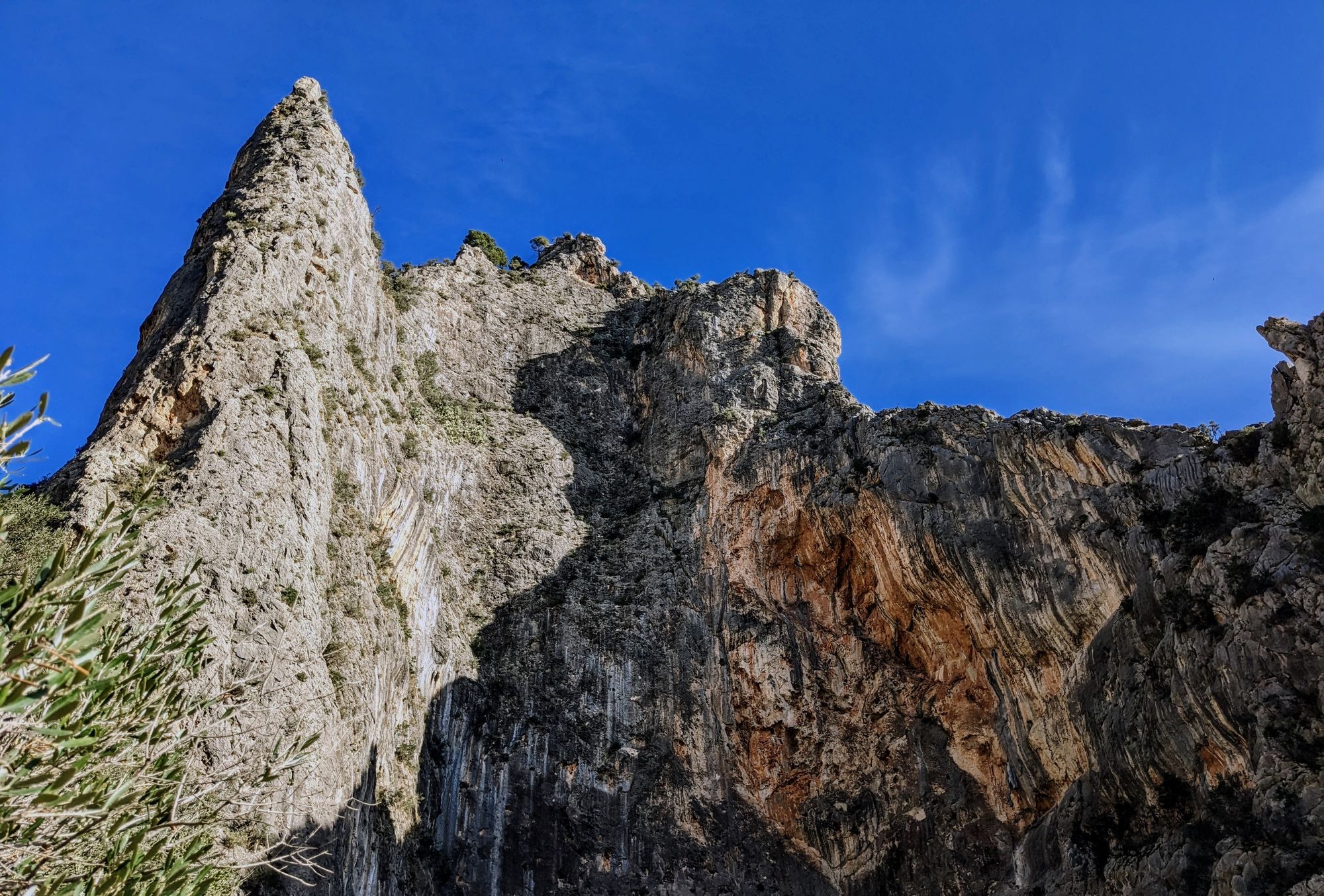Quick info
- THE classic multi-pitch line on the island that is very much worth doing.
- A fairly long route on an impressive pillar that continues into a ridge scramble to the peak of Puig de Sa Gubia for a full day out.
- Normally 7 Pitches (less or more are possible depending on how long you like yours) / 230 meters
- 3a / 4b / 4b / 3b / 4c / 3b / 3c (Note that the grading of the pitches varies depending on what exact line you take. In general the climbing is easy compared to other routes in this guide).
- Good variation making the route steeper and harder possible.
- Trad protected but with quite a bit of fixed gear to be found on the route.
- Continues into an easy but exposed ridge scramble.
- Walk off from the top of the peak.
General
The Sa Gubia climbing area is spread out on several walls to both sides of a deep valley close to the village of Bunyola. The three main features are the blank „Paret de Coloms“, the impressive cirque with its hard overhanging routes and the Sa Gubia pillar with its consistent steepness and ridge. This crag is one of the most popular on the island and quite busy especially on weekends.
Most of the routes in this guide are not well known even among climbers who have visited Mallorca before. Not so „Albahida“. A total classic with great climbing at a very moderate grade in a stunning setting. Even if you are looking for more „out there“ climbs on the island you still should consider doing this route as well not only to get it under your belt but because it has its status for good reason.
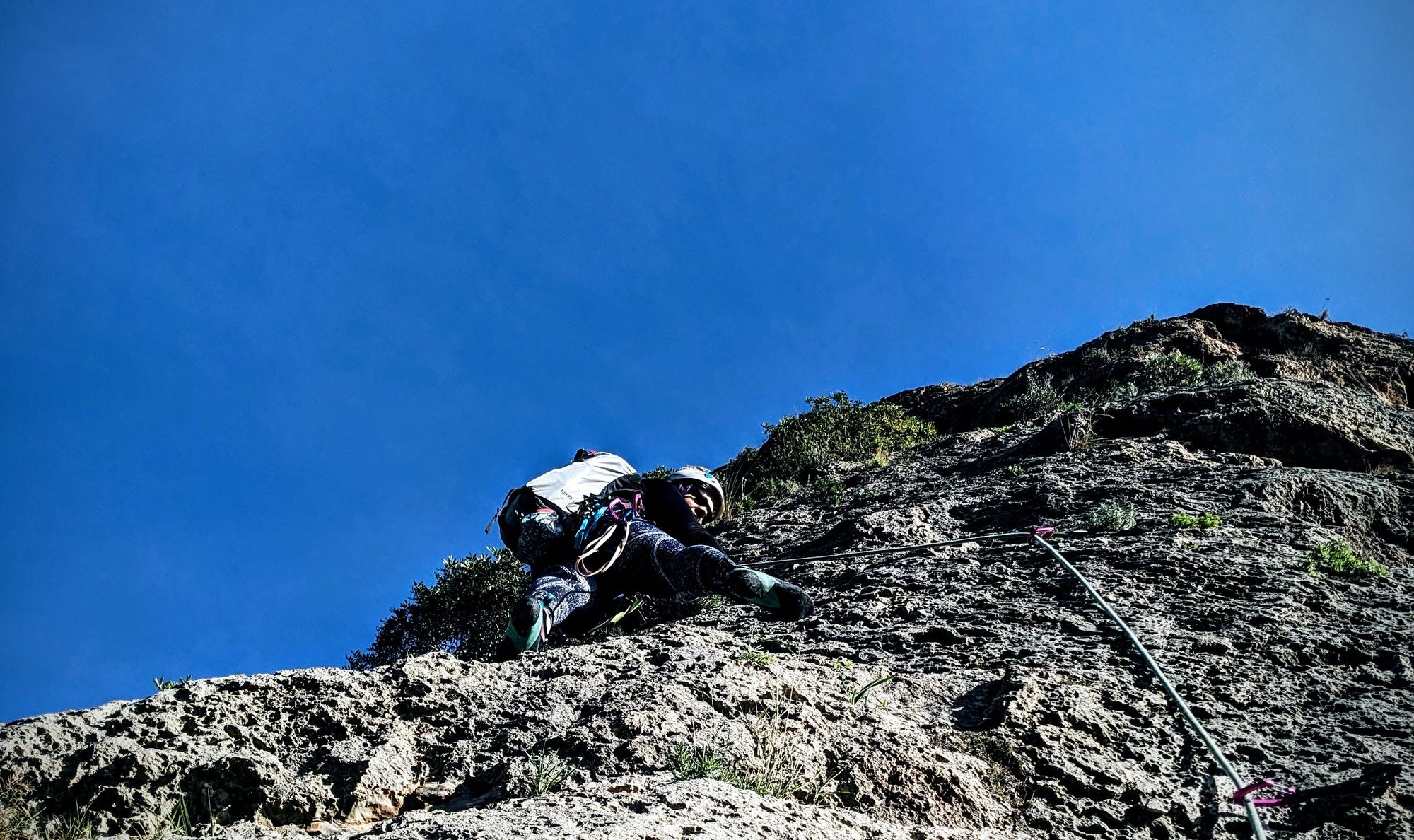
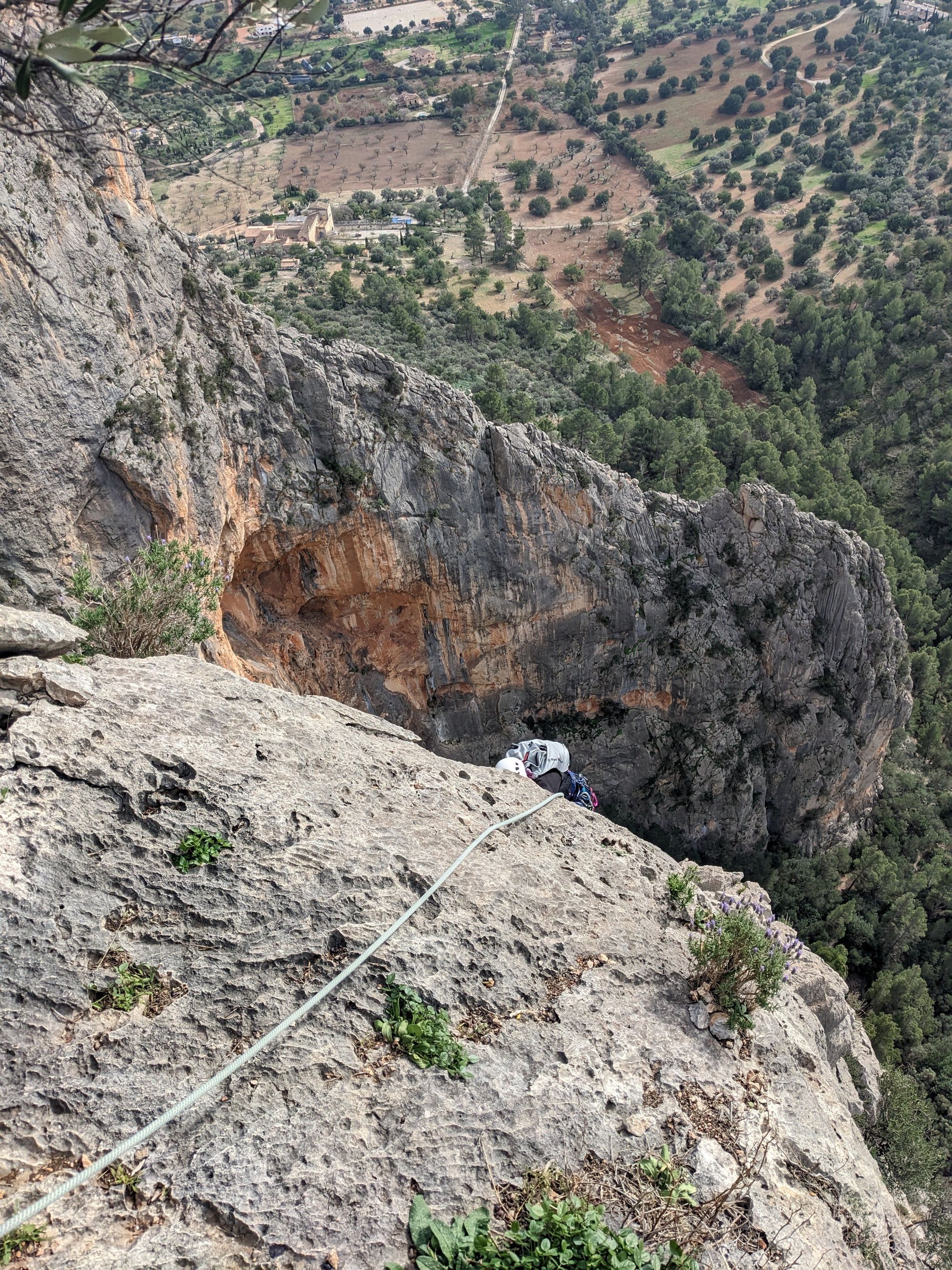
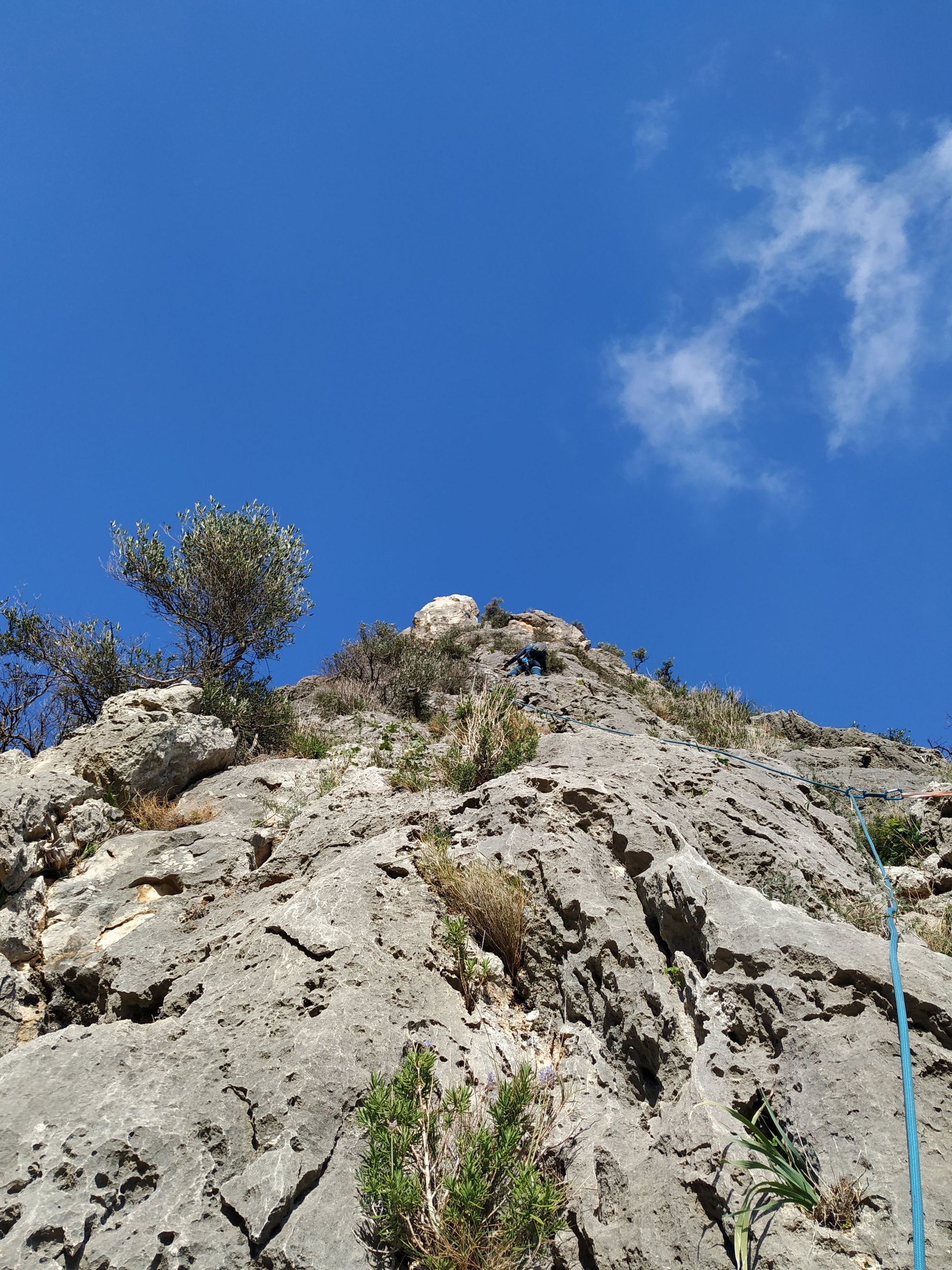
Logistics
Drive on towards the tunnel leading to Soller and find the intersection between the main road (MA-11) and the one leading to Bunyola (MA-2010) and look for a parking spot either somewhere by the road or the parking area of the Restaurant at the intersection. As the Sa Gubia climbing area is quite popular and many people park here - make sure to go into the restaurant, if it is open, and pay the small parking fee (about 4 €) they are asking for (alternatively eat here when you come back).
After the climb you might want to visit the picturesque village of Bunyola for a coffee in one of the nice bars right by the church.
Approach and descent

Cross the street (if you parked at the restaurant) and find a small road branching out towards the south. Follow this road for a good 10-15 minutes. It will turn into a dirt track and at some point (after the large horse enclosure) take a small dip. Take a sharp right turn into a dry creek bed which you will follow for a good while until the fences to the right end and a clear path continues out of the creek to the right and heads towards the walls and the clearly visible main Sa Gubia pillar. Walk on and up the paths towards the walls and after crossing a small ravine continue on for a few meters to the lowest point of the pillar.
After you have finished the actual Albahida climb you can either store away the rope completely or keep a few meters in between the climbers for a bit of additional protection while scrambling up the ridge that leads up. Following the ridge is straight forward: Keep as high as possible and after 45 to 60 minutes you will reach the viewpoint right on top of Puig de Sa Gubia (surrounded by a small stone wall).
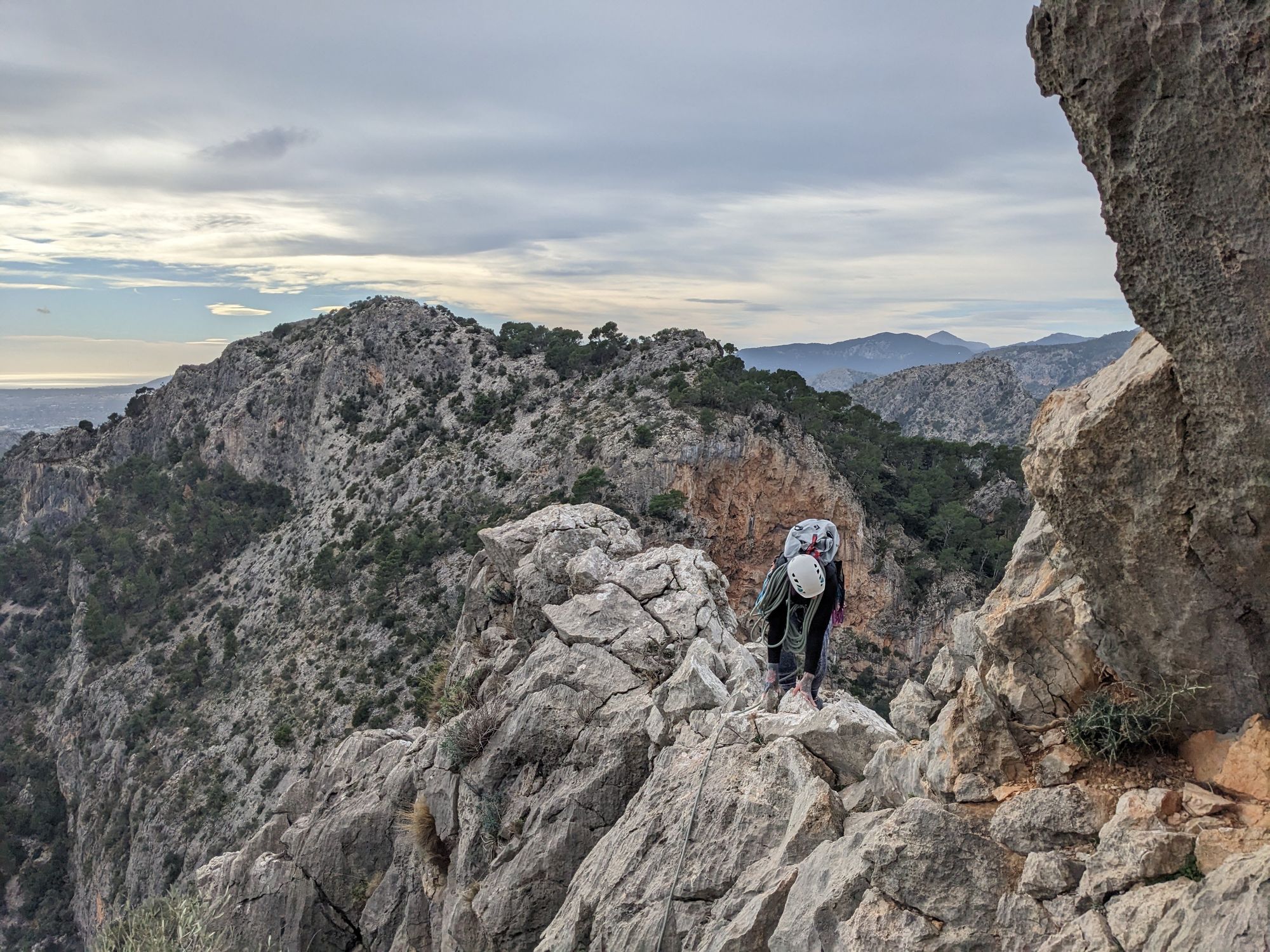

From the viewpoint take the clearly visible path heading north until you reach a 4x4 track. Turn right onto the track and continue down for a long while and via many, many switchbacks until you reach the main road. The last kilometer back to the car is a walk towards the south on the curb of the MA-11.
Technical information
- There are different options for the number of pitches to split this climb up. You could get away with 5 long or do 10 short ones. For this guide we chose the 7 pitch version that keeps rope drag reasonable and allows for okay communication between climbers.
- The total length of the climb is about 230 meters.
- There are several other climbs (mostly sport bolted) that lead up the pillar. However Albahida does not intersect with them.
- There is a sport bolted variation called „Quan es fa fosc“ that leads up a steeper bit of the pillar to the left and replaces the middle section of the route. This variation is three pitches long and rated 5b. It starts after pitch 1 of Albahida and rejoins the climb higher for the last pitches. Find more information on the variation here.
- Although the climb is a trad route there is quite a bit of fixed gear (threaded slings, pitons and a few expansion bolts) on the way up. Still carrying trad gear is necessary. The belays are often bolted and mostly in comfortable positions.
- Gear: Either a 60 meter single rope (if you plan to continue on up the ridge and are sure you will get up the climb) or two 60 meters (to retreat or rappel), 10 quick draws, slings, a few cams and possibly nuts.
- Rappelling the route is possible however the low angled sections and the nature of the rock does provide a high risk for ropes getting stuck. There have been rescues here for exactly that reason. The best option is to continue on up via the ridge. If you do know the area well you can rappel down one of the sport routes like „La Lay de Deseo“.
- The route is well traveled and the rock is solid. Still be careful with rockfall as this is a busy crag and line.
- If your party moves quickly you might want to start early to not run into slower parties above you. Passing at belays is possible.
- The Pillar is generally south facing and exposed to the sun (note that the „Quan es fa fosc“ variation is a bit around the corner to the west and does get less sun). In the Sa Gubia valley the wind can be quite strong even on calm days - if the wind is particularly strong the climb and especially the ridge can feel significantly harder.
Climbing and pitches
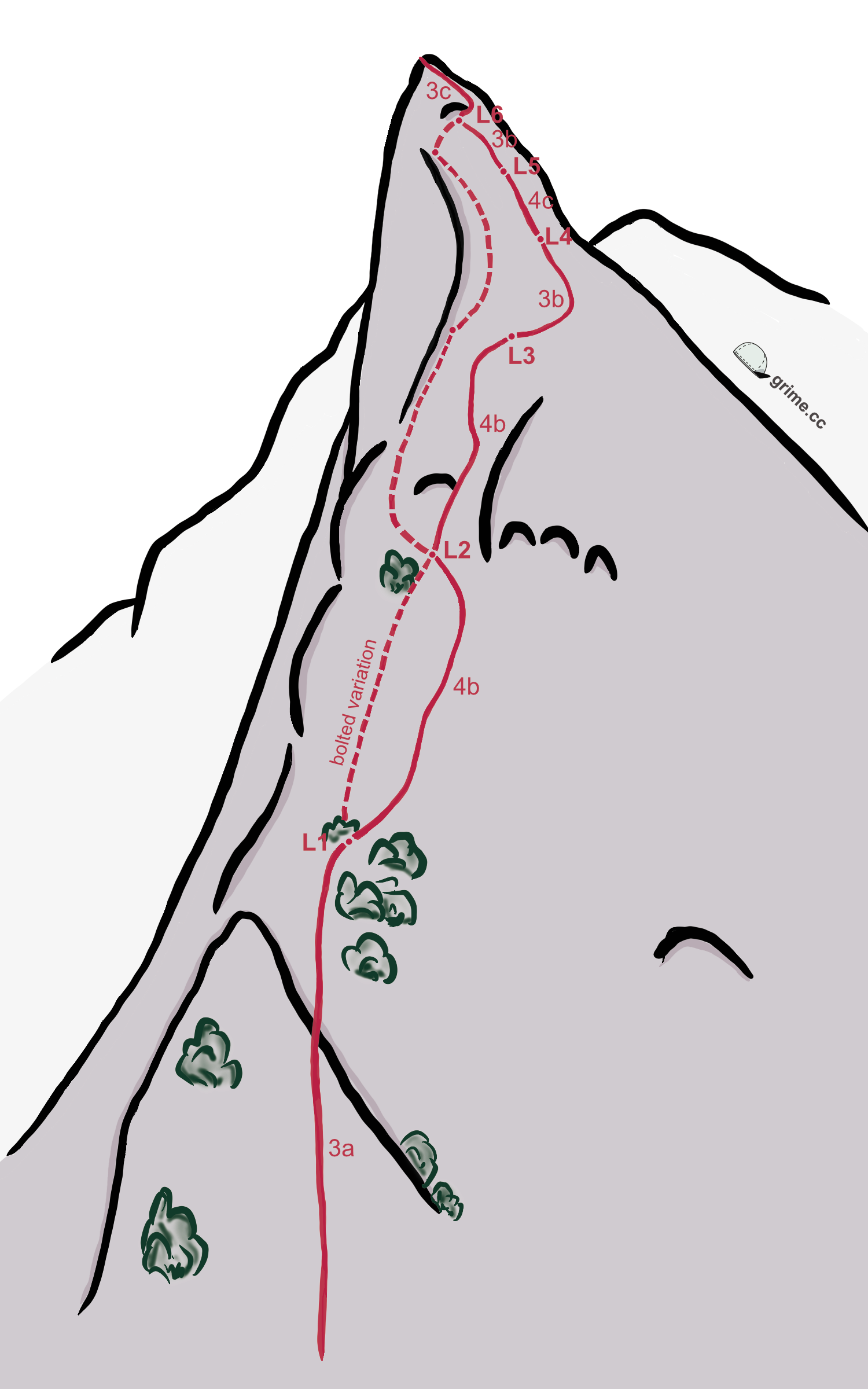
Pleasant climbing on solid rock with mostly large holds. The stances are comfortable and often have enough space for two parties.
A quick party might do the whole climb in three hours but it can take up to six if you take your time. This is excluding the ridge (45-60 min).

